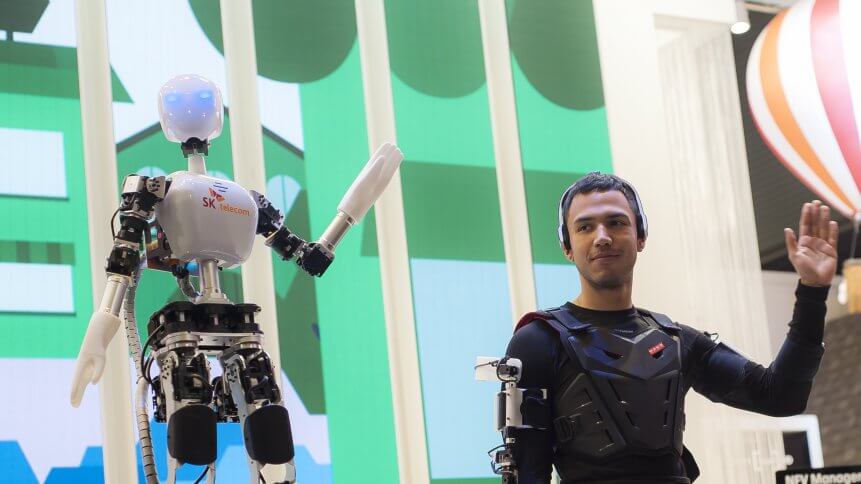AI and jobs: It’s more complicated than you think

The Terminator introduced the idea of AI as an existential threat, specifically in the form of “a cybernetic organism, living tissue over a metal endoskeleton.”
Although some business leaders, AI researchers, and commentators continue to sound the alarm over a potential AGI (artificial general intelligence) that may seek to eliminate us, it’s a lot easier for workers to view AI as a threat to their job security.
This is partly because of precedent. Workers have already felt burnt by automation, outsourcing, and union-busting tactics. While these things are somewhat different, they are all motivated by a corporate desire to maximize efficiencies.
Now, AI is being introduced into workplaces for the sake of efficiency. It offers data-driven strategizing, greater precision, higher ROI, frictionless retail experiences, and enhanced measurement capabilities.
Maybe AGI is actually more threatening over the course of a century, but for now, Skynet is out of sight, out of mind. So too is a technological singularity, Black Mirror-style digital uploadings of self, and even cyborgs, despite the foreboding predictions of one academic.
Shimon Whiteson, a professor of computer science at the University of Oxford, has opined, “I think the human and the computer are really, really quickly becoming one tightly-coupled cognitive unit.”
Although this may result in productivity gains and a transformation of health, the cyborg characterization also brings Orwell’s concept of “thought police” to a whole other level. “Imagine when the internet is in your brain if the NSA can see into your brain, if hackers can hack into your brain,” Whiteson has commented.
But while thoughts about the fundamental nature of thoughts may very well be thought-provoking, a worker may be inclined to respond: ‘But what about my damn job? I’ve got a mortgage!’
AI is coming for the management
And, of course, the probable future depends on your particular job. There have been many well-publicized stats and predictions indicating that certain types of workers, blue-collar and paper pushers alike, are about to get the axe. Some will. Others may find their jobs transformed beyond recognition. Others may express gratitude for new tools that eliminate the burden of tedious tasks and restore their time and focus to the more creative, meaningful, and human aspects of work.
YOU MIGHT LIKE

21 new jobs to help you survive in the age of AI
But a workplace doesn’t just consist of workers. It also features managers who have their own inefficiencies and biases. Introducing AI-powered efficiencies at the top could be just as significant as the pink slips distributed at the bottom.
Maybe more so, at least in the short-term. AI can quickly crunch the numbers of voluminous and varied datasets. It can evaluate performances, reallocate resources, and even automatically generate the paperwork for terminations. That is a pretty compelling use case.
AI vs. human labor
Menial workers can also be rendered obsolete but there are some additional factors to consider.
In certain instances, it’s hard for a robot to remain competitive against government-subsidized, non-unionized human labor. A robot currently requires the sourcing of parts, manufacturing, energy, maintenance, and sometimes supervision.
All of these costs will go down over time, particularly once ecosystems of robots can fully self-manufacture, self-repair, and self-improve. But if you’ll pardon this incredibly cold, economic outlook on love, families, and life itself, humans are already a self-perpetuating resource.
Many governments have demonstrated a willingness to support fiscal policies, labor laws, and indirect subsidies that could be reasonably characterized as “corporate welfare.” A corporation can refrain from paying an employee a living wage and then governments step in with individual assistance that is in effect a form of corporate subsidization, as the corporation is spared from the true costs of human labor.
Consider drones that clean the windows of office towers. The technology is fascinating but there’s still a machinery plus operator cost. In my city, the services of manual window cleaners can be procured for roughly $20-25/hr.
Those poor robots! How are they supposed to steal our jobs if the playing field is leveled against them?
Don’t worry, robots. Give it time.








